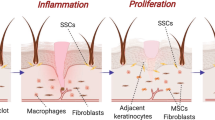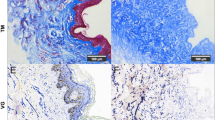Abstract.
Background: The production of autologous composite skin equivalents for the treatment of full-thickness skin defects in burns is time consuming and costly because of laboratory procedures which have to be performed manually. In the present study keratinocytes were seeded into INTEGRA Artificial Skin and placed in a perfusion culture system in order to evaluate the possibility of producing composite grafts in an automated system with the aim of establishing a cost-effective method of industrial production. Methods: Composite grafts of INTEGRA and human keratinocytes were raised in perfusion culture and grafted onto athymic mice to evaluate their potential to reconstitute a full-thickness skin substitute in vivo compared to grafts from standard stagnant cultures. Results: Cultured composites from perfusion cultures showed no significant histological differences compared to those from stagnant cultures; however, a tendency of improved cell growth and a more surface-oriented localization was observed. Cell proliferation and surface-bound differentiation were not impaired by the use of carbonate-independent buffering (HEPES), which is necessary for perfusion culture. The composite grafts from perfusion culture exhibited identical wound adherence and complete healing and histologically represented a multi-layered, keratinizing human epidermis. Conclusion: Engineering of differentiated composite skin equivalents is possible in a perfusion culture system, which offers technical and procedural and possibly even biological advantages compared to standard stagnant culture methods. The development of automated perfusion culture systems for the production of composite grafts in sizes required clinically (scale-up) will be the next step in the cost-effective engineering of large-scale composite skin equivalents.
Similar content being viewed by others
Author information
Authors and Affiliations
Additional information
Electronic Publication
Rights and permissions
About this article
Cite this article
Kremer, M., Lang, E. & Berger, A. Organotypical engineering of differentiated composite-skin equivalents of human keratinocytes in a collagen-GAG matrix (INTEGRA Artificial Skin) in a perfusion culture system. Langenbeck's Arch Surg 386, 357–363 (2001). https://doi.org/10.1007/s004230100227
Received:
Accepted:
Issue Date:
DOI: https://doi.org/10.1007/s004230100227




